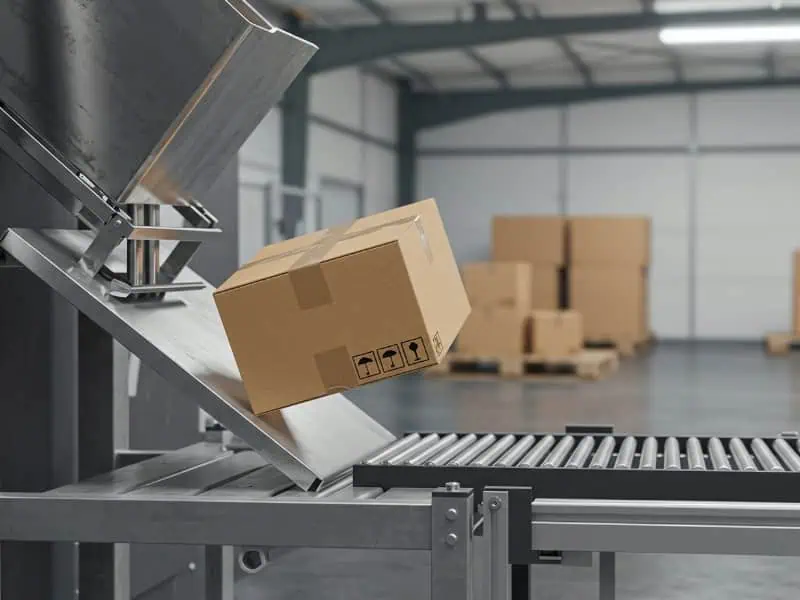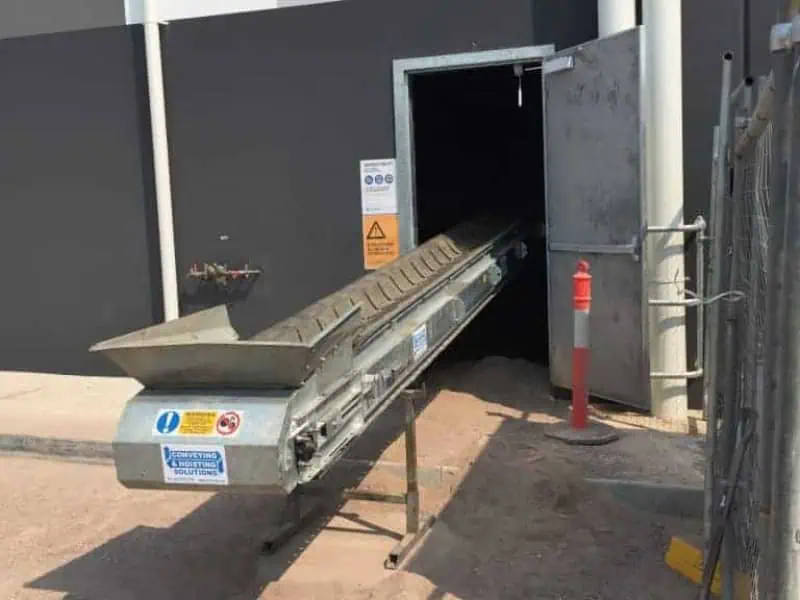Modern factories stay competitive by synchronising flow, compressing lead times, and protecting people—exactly what industrial conveyor systems enable with pace, precision, and predictable handoffs. From raw materials to dispatch, they stabilise takt time, reduce touches, and minimise micro-stops that chip away at capacity. Moreover, matched belts, right-sized drives, and intelligent controls keep goods moving without flogging downstream equipment or fraying safety margins. When the kit is wrong, jams, spillage, and rework creep in; when it’s right, productivity builds quietly shift after shift. This matters in Australia’s high-cost environment, where downtime stings and every rework pass is a labour-intensive work in the late afternoon. This article explains how conveyors improve lift efficiency, mitigate risk, and enable reliable upgrades without breaking stride during busy production weeks.
Why are industrial conveyor systems crucial to production efficiency?
Well-designed systems set the rhythm for upstream and downstream processes, turning variable work into smooth, predictable flow. Moreover, correct belt selection, zoning, and accumulation reduce starve-and-block cycles that smash OEE and morale. Here are the efficiency drivers:
- Line balance design: Sequencing zones and gaps so machines neither starve nor flood, supporting Higher throughput.
- Accumulation logic: Buffering where variability is highest to smooth rate changes and keep packers busy.
- Low-friction components: Reducing heat and wear so motors draw less and stay in spec.
- Inline checks: Catching mispacks and weight errors before they contaminate the next steps.
Ultimately, efficiency is a compound effect of small, steady wins. As a result, operators spend less time firefighting, rework shrinks, and the plant banks Lower downtime costs, making quarter-end much less of a nail-biter.
What challenges arise when manufacturing plants use outdated conveyor technology?
Legacy conveyors struggle with variable speeds, mixed packaging, and modern safety expectations. Consequently, jams multiply at transfers, quality drifts, and resets take longer than planned. In short, plants pay through time, risk, and energy.
Informative table — Outdated vs Modern capabilities:
| Factor | Outdated conveyors | Modern conveyors | Why it matters |
| Controls | Fixed-speed, reactive stops | Zoned control with adaptive speeds | Limits backlogs and topple events |
| Safety | Patchy guarding, manual resets | Integrated guarding, diagnostics | Cuts Hidden safety risks during busy shifts |
| Energy | High-friction idlers, aging drives | Efficient drives, low-friction belting | Reduces Energy waste and heat |
| Maintenance | Long changeouts, manual checks | Quick-release belts, condition monitoring | Short, planned stoppages |
| Data | Little visibility | OEE and event codes to MES/SCADA | Faster root cause analysis |
Here are the upgrade priorities:
- Controls refresh: Introduce zoning and speed harmonisation to stabilise merges and declines.
- Safer interfaces: Standardise e-stops, light curtains, and clear reset procedures for faster, safer recoveries.
- Powertrain modernisation: Swap high-friction runs and tired drives first to capture energy savings.
- Modularisation: Specify drop-in sections so future changes are on the cards without tearing up the floor.
On balance, a staged program protects throughput while chipping away at risk and cost. Moreover, short-hit projects teach the team what works in this plant, not on a vendor brochure.
How does poor conveyor belt selection impact safety and productivity?
A belt that looks fine on paper can misbehave under real loads, temperatures, and cleaning chemicals. As a result, skew, scuffing, and mis-tracking creep in, forcing operators to perform unsafe manual interventions and work overtime. Here are the belt selection essentials:

Industrial Conveyor Systems keep your packing line moving with steady, reliable product handling.
- Compound compatibility: Match PVC/PU, rubber, or modular plastic to oils, heat, and sanitation regimes.
- Surface and grip: Balance traction so shrink-wrapped packs don’t snatch while smooth tubs don’t surf.
- Structure and splice: Choose fabric layers and splices that survive tight transfers and frequent cleaning.
- Geometry and tracking: Validate pulley diameters, crowned rollers, and snub angles at true line speed.
When the brief is complex, clear references help avoid false economies. Many teams consult trusted solutions for advanced industrial conveyor systems to cross-check belt types, profiles, and splice options before sign-off. Ultimately, a disciplined choice prevents nuisance stops and delivers fewer manual touches, the surest path to safer, faster shifts. In practice, the right belt stabilises, merges, protects the product, and keeps noise down for easier supervision. Consequently, quality holds steady and planned rates stick across shifts.
How can industrial conveyor systems be customised for specific industries?
Industry risks drive design. Food sites need open-frame stainless and tool-less cleaning; warehouses favour zero-pressure accumulation; mining demands abrasion-resistant belting and sealed bearings. Consequently, specifications must reflect product, environment, and compliance. Here are the customisation levers:
- Hygienic design choices: Open profiles, lift-up tails, CIP access, and FDA-grade materials where needed.
- Flow architecture: Diverts, merges, and accumulates tuned to carton sizes and SKU volatility.
- Environmental hardening: Dust seals, heaters, and guarded nip points for harsh, remote locations.
- Modularity: Curves, inclines, and belt-over-roller sections that drop in without redesigning the lot.
Ultimately, modular builds reduce project risk and speed future changes. Moreover, flexibility means line owners can respond to promotions, seasonality, and new packaging without big dramas.
What role do industrial conveyor systems play in material handling innovation?
Innovation lives where conveyors, sensing, and software meet. Because drives, photoeyes, and weight cells now talk to MES, lines self-tune, and stoppages are easier to predict and prevent. Here are the innovation drivers:
- Connected VSDs: Duty-cycle data informs targeted maintenance and energy trims.
- Vision and weighing: Inline checks reject defects early, protecting first-pass yield.
- AMR integration: Zone-aware control keeps robots fed without starving manual stations.
- Ergonomics by design: Pop-up transfers and lift tables reduce the risk of bending and twisting.
Ultimately, richer data gives supervisors visibility into causes, not just symptoms. In turn, continuous improvement becomes authentic, not folklore from the last breakdown.
Why should manufacturers prioritise conveyor maintenance and system upgrades?
Maintenance is where uptime lives; tracking checks, lubrication, and safety validation keep incidents off the board. Moreover, digitised PMs and kitted spares keep technicians on the tools rather than hunting for parts. Here are the maintenance and upgrade essentials:
- Condition-led PMs: Trend heat, vibration, and belt stretch to plan swaps well before failure.
- Quick-change design: Lift-up tails, drop-in rollers, and standardised splice kits shrink changeover time.
- Spares strategy: Stock critical belts, bearings, and drives to slash MTTR.
- Competency alignment: Tie SOPs and inductions to nationally recognised units to build confidence.
Training underpins all of this. Safety reps and supervisors often rely on training standards for operating industrial conveyor systems to harmonise language, expectations, and assessment. Consequently, plants earn predictable maintenance windows that planners can bank on, and customers feel stable OTIF. Ultimately, a living maintenance plan turns nasty surprises into routine tasks. As a result, overtime drops and the night shift isn’t left holding the bag.
Final thoughts
Efficiency comes from disciplined choices: right belts, smart zoning, simple resets, and training that sticks. Moreover, a staged roadmap captures wins without derailing production during peak periods; that approach keeps changes sustainable and avoids heroics that fade by month’s end. When priorities are set and the team is trained, flow steadies and performance builds quietly, shift after shift. For a practical conversation that respects site constraints and safety, explore how Conveying & Hoisting Solutions supports safe material handling as they scope upcoming works and lock in the next round of upgrades.




